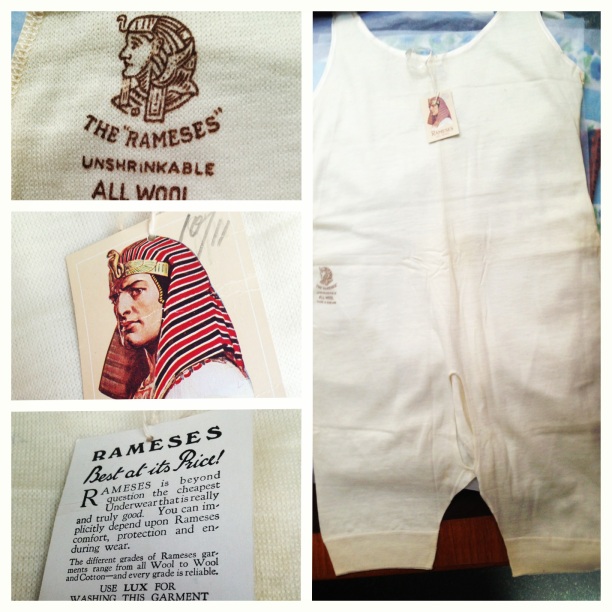Underwear and the Hodson Shop Collection
Let’s talk about underwear.
The Hodson Shop contains a lot of underwear and analysing it has been quite an eye opening experience! Let’s just say that there’s nothing like a pair of pale brown 1920s woollen knickers to make you eternally grateful for a humble pair of M&S cotton briefs.
The drab, frumpy and substantial (in both cut and fabric) nature of some of the underwear that I have been examining has highlighted one of the key dangers when using the collection to make generalisations about fashions and dress from particular eras. It is quite easy to look at items from, say, the 1920s and use them to create a vision of what people wore during that period. Yet caution is required.
Garments in the collection are there for a simple reason: no one ever purchased them. This could be a case of the Hodson sisters buying in far too many items and refusing to have stock clearance sales or it could be that they were simply stocking things that no one wanted.
Take this 1930s woollen combination (below). It is made by the fabulously named ‘Rameses’. The first thing I noticed was the sheer weight and thickness of the fabric, I then noticed the open crotch and I have to admit that that there were giggles. To 21st century eyes, the garment has an almost comic quality. It is a world away from the ‘sexy’ briefs and bras that stuff underwear drawers across the country. In fact, it is a world away from ‘sexy’ fullstop!
Forget Agent Provocateur or Coco de Mer, this is underwear that was intended to perform a function. The open crotch, for example, was there to enable the wearer use the toilet without having to get undressed. That’s not to say that the wearers of such garments didn’t get frisky when the urge so took them…
The Hodson Shop would have needed to cater for their older customer. So during the 1920s and 1930s when many of Willenhall’s young ladies would have been donning shorter skirts, some Hodson Shop customers were possibly still sporting Edwardian-era ankle length skirts. In that context, a knee length woollen combination with a split crotch begins to make something resembling sense.
These are items that were out of fashion even at the point of potential sale. They make regular appearances throughout the collection as the customers who would have worn them were dying out or adapting to new styles of underwear.
There is a general trend emerging through the collection of undergarments becoming smaller (and often prettier) as time progresses. A Utility bra is made in a delicate shade of rose, with ribbon straps; a 1950s slip has chiffon flounces printed with trailing flowers (see above). I am also beginning to notice a shift in the promotional text used on swing tickets and labels. Earlier garments are accompanied with copy that emphasises their value, durability and quality. Vests are ‘Unshrinkable’ and ‘Protective’ (see image of the ‘Rameses’ combination above). There is also an emphasis on the ‘purity’ of the fabrics used. I am yet to observe such text accompanying underwear from 1940s-50s. This possibly gives a few hints about how social attitudes towards women, dress and sexuality were changing.

